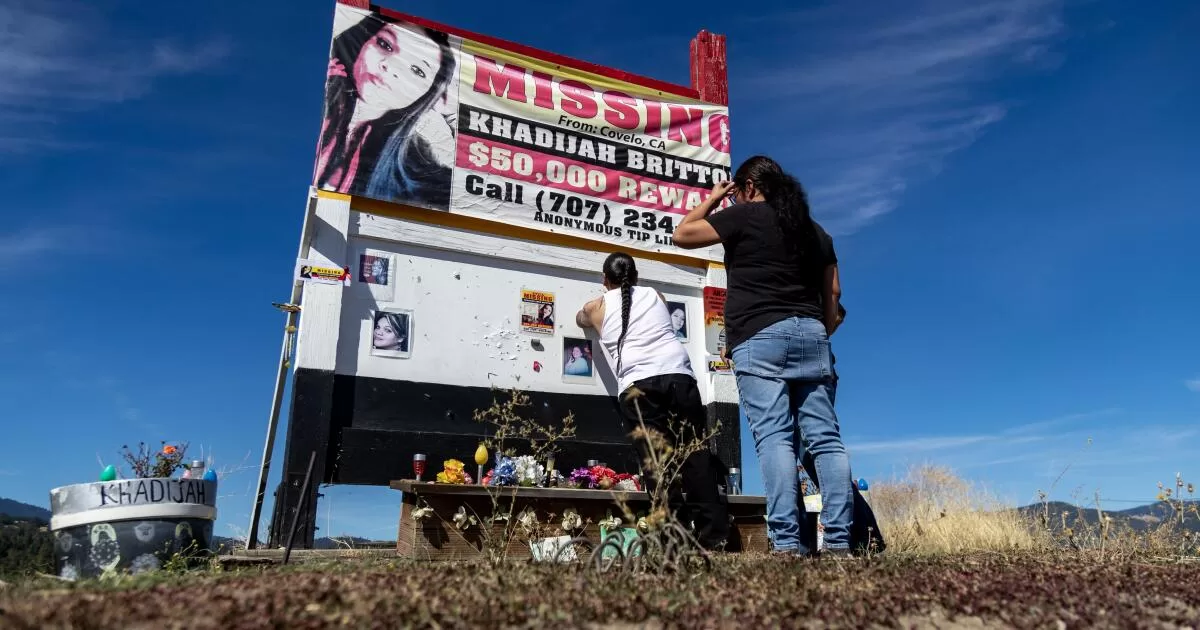But the request was denied, making Ipiña-Vigil one of three known cases of Native people living in California who went missing in the last year and for whom a Feather Alert request was dismissed. Since the system began a year ago, authorities have issued just two of the five Feather Alerts requested, according to the California Highway Patrol.
A CHP official said local officers denied the requests because they did not meet the criteria, which include that the person went missing under suspicious circumstances and is believed by officials to be in danger.
But the denials have fueled concerns in Native communities that the system meant to help locate missing Indigenous people is not working as intended.
“We’ve had two successful Feather Alerts and numerous denials,” Taralyn Ipiña said while talking about her sister Danielle, who went missing in June, during a somber news conference Wednesday. She was later found, and details on her case are limited. “Being denied a Feather Alert based on opinions contradicts the very basis of [this] legislation.”
Now Sacramento policymakers are re-evaluating how well the law is working. More than a dozen California tribal members gathered at the Capitol last week demanding information about the three denied missing-person alerts. They are also asking to remove a statute that requires local law enforcement to act as the buffer between tribes and the CHP, and to instead open the door for state and tribal police to work together.
“The alert has to be issued by CHP the way it’s structured. But the middleman is the local law enforcement agency that the request comes into,” said CHP Commissioner Sean Duryee, who testified at the hearing. “Some do really, really good. What’s been expressed to us is that sometimes that middleman creates issues for the tribal communities.”
The Feather Alert, signed into law in 2022, was designed to be similar to the Amber Alert, which since its inception in 1996 has located more than 1,100 missing children nationwide. Assemblymember James Ramos (D-Highland), who was the first California Native American elected to the Legislature, argued that the state needed a separate system for missing Indigenous people because of high rates of violence and abductions in tribal communities. It’s one of seven categories of missing-person alerts in California.
New data show that the CHP approved all six Amber Alert requests it received in the same year it denied three of the Feather Alert requests.
Leaders and members from tribes around the state, including the Yurok and Me-wuk, arrived early at the Capitol asking for clarity on those requirements and for reports of missing persons to be treated with urgency.
“We can’t be caught in the middle of California Highway Patrol and the tribe,” said Chairman Joe James of the Yurok Tribe, who live near the lower Klamath River. “Why were they getting denied?”
There are 151 active cases of missing American Indian/Alaska Natives in California. At least one of the denied Feather Alerts came out of Humboldt County, which currently has the highest number of cases.
Duryee didn’t go into detail during the hearing about the denied cases, citing privacy laws, but said that the officer who responded to the requests “didn’t feel like the criteria were met.”
Tribal members said these denials are reminiscent of historical traumas linked to decades of under-reported cases of missing and murdered people — the reason the Feather Alert was created in the first place.
“There are so many factors that go into determining if they’re missing,” Duryee said. “Just because someone doesn’t qualify for Feather Alert doesn’t mean we wash our hands clean.”
Duryee said law enforcement agencies still have the power to do “traditional police work,” such as using license plate recognition or cellphone data. “Just because an alert is not issued doesn’t mean law enforcement isn’t working on it,” he said.
During the emotional hours-long hearing before the Assembly Select Committee on Native American Affairs, Indigenous individuals voiced mistrust in the state’s system for reporting crimes and missing persons.
Merri Lopez-Keifer, director of Native Affairs for the California Department of Justice, testified that her team is re-evaluating data about crime against tribal members, citing potential “misidentification” of race and “underreporting.” She said missing-person reports allow for only one race category to be selected, which does not account for the “vast landscape and regional variations” across the state.
“This approach may overlook potential cases involving multi-racial individuals,” Lopez-Keifer said. “It is especially relevant in the context of American Indian/Alaska Natives who are often racially misclassified as white, Hispanic or Asian.”
“We don’t necessarily know the number, it’s the truth,” she said.
Tribal communities are asking for amendments to the law, including giving tribal law enforcement authority to issue Feather Alerts. Ramos said he plans to propose legislation in the coming weeks.
“Today’s hearing was meant to put ideas out into the open,” he told The Times. “And now we will go to work.”
